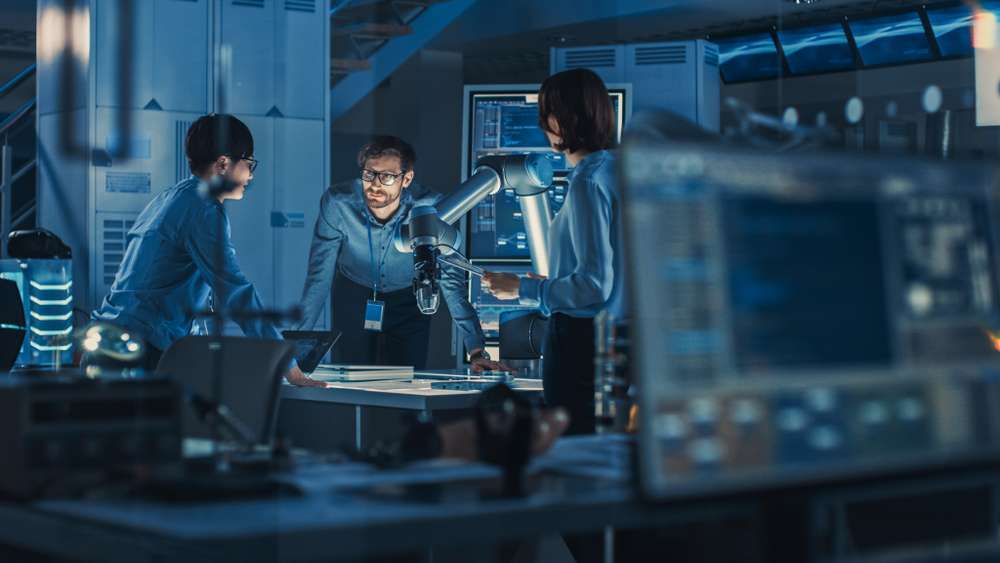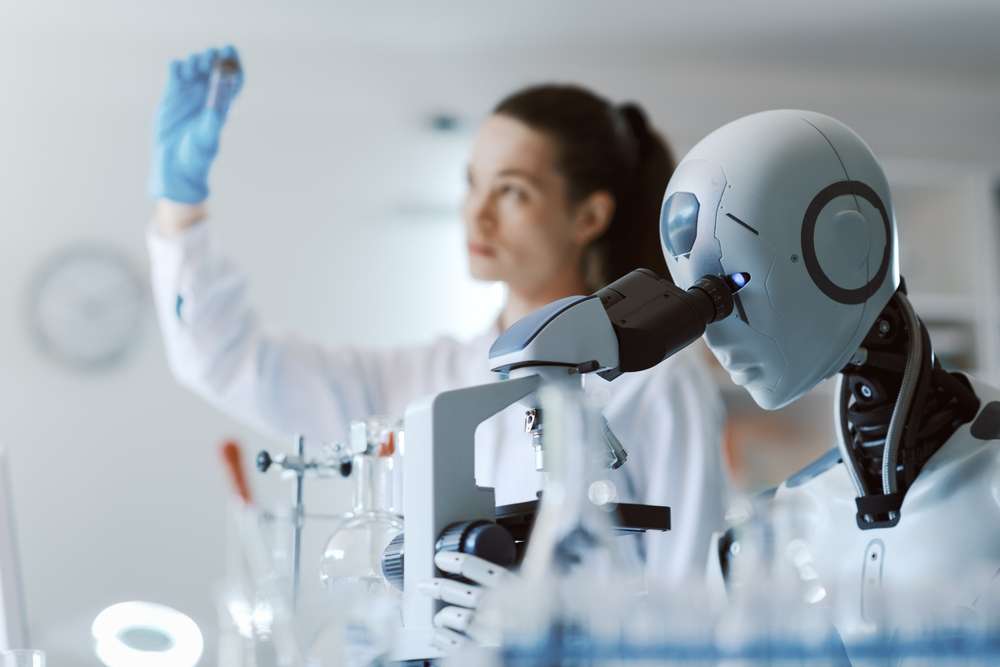Introduction

Imagine a world where scientific discoveries happen not in years, but in minutes. Where complex chemical reactions, once the domain of Nobel laureates, are routinely performed by an artificial intelligence with the precision of a seasoned chemist. This is the future promised by Coscientist, a groundbreaking AI system that is revolutionizing the way we do science.
In a remarkable feat of artificial intelligence, Coscientist has learned about Nobel Prize-winning chemical reactions and successfully designed and executed laboratory procedures to perform them, all within minutes and on its first attempt. This breakthrough demonstrates the immense potential of AI to accelerate scientific research and usher in a new era of discovery.
The Power of Coscientist
Coscientist is not your average lab assistant. It’s a complex system powered by large language models (LLMs) trained on vast amounts of scientific data, including text, chemical structures, and experimental results. This allows it to:
- Plan and design chemical experiments: From simple tasks like dispensing liquids to complex multi-step reactions, Coscientist can autonomously generate detailed procedures based on its understanding of chemistry.
- Operate robotic lab equipment: It can translate its plans into instructions for robots that handle chemicals, heat samples, and perform other necessary actions with an efficiency and precision that surpasses human capabilities.
- Analyze and interpret results: Coscientist can analyze the data generated from its experiments to determine their success and identify areas for improvement. This iterative process of learning and refining its approach allows it to constantly improve its performance.
A Glimpse into Coscientist’s Capabilities
The researchers behind Coscientist put its skills to the test in several ways, showcasing its remarkable abilities:
- Synthesizing common drugs: It accurately planned procedures for creating aspirin, acetaminophen, and ibuprofen, demonstrating its grasp of fundamental chemical principles.
- Performing Nobel Prize-winning reactions: Coscientist independently learned about the Suzuki and Sonogashira reactions, then designed and executed them flawlessly in the lab, showcasing its ability to tackle complex tasks that involve multiple steps and intricate chemical interactions.
- Collaborating with humans: It interacted with technical manuals and scientific databases to acquire information, highlighting its potential for seamless integration with existing scientific infrastructure. This collaboration between human and AI expertise can lead to even greater breakthroughs.
Beyond the Lab: Implications and Future Prospects
Coscientist’s success opens up a Pandora’s box of exciting possibilities for the future of scientific research:
- Accelerating discovery: AI can tirelessly explore vast chemical spaces and material combinations, leading to faster identification of promising new materials and medicines. This could revolutionize fields like energy production, drug development, and even space exploration.
- Democratizing science: Anyone with an idea can potentially use AI tools like Coscientist to design and conduct experiments, lowering the barrier to entry for scientific pursuits. This could empower countless individuals with the ability to contribute to scientific advancement, regardless of their background or access to traditional research facilities.
- Improving reproducibility:
- The integration of artificial intelligence (AI) into scientific research introduces a paradigm shift marked by meticulous precision and the automation of complex processes. AI’s unparalleled ability to execute experiments with unwavering consistency and accuracy stands as a transformative force, promising a new era in scientific inquiry. By automating routine tasks, AI reduces the risk of human error and ensures that experiments are carried out under standardized conditions, ultimately leading to more reliable and reproducible results.
- In the realm of scientific discovery, reliability is paramount. AI’s capacity to tirelessly adhere to predefined protocols and execute experiments with precision addresses a longstanding challenge in scientific research – the variability introduced by human involvement. By minimizing the impact of human error, AI contributes to the production of more dependable and consistent data. This not only enhances the credibility of research findings but also accelerates the pace of scientific advancement by providing a robust foundation for building upon existing knowledge.
- The implications of AI’s meticulous approach extend across various scientific disciplines, from chemistry and biology to physics and beyond. In fields where experiments involve intricate processes and numerous variables, the automation capabilities of AI offer a transformative solution. Researchers can rely on AI-powered tools to perform repetitive and time-consuming tasks, freeing up valuable human resources for more complex and creative aspects of scientific exploration. This symbiotic relationship between AI and human researchers holds the promise of unlocking new frontiers in scientific understanding.
- Moreover, the consistency afforded by AI-driven experimentation holds particular significance in longitudinal studies and large-scale projects where the accumulation of vast datasets is essential. AI’s ability to process and analyze extensive data sets swiftly and accurately enhances the efficiency of research endeavors, enabling scientists to extract meaningful insights from complex information. This, in turn, contributes to a deeper comprehension of intricate scientific phenomena and facilitates the identification of patterns or trends that may have eluded traditional research methodologies.
Conclusion
Coscientist is a pivotal moment in the history of scientific progress. It represents a giant leap forward in the field of AI and its potential applications in the real world. As we continue to develop and refine these technologies, the potential for scientific breakthroughs and advancements in human health and well-being seems limitless. With AI as our lab partner, the future of scientific discovery is brighter than ever.
Diving into the realm of scientific innovation, Coscientist emerges as a groundbreaking tool poised to redefine the landscape of research. To offer a comprehensive understanding of its capabilities, consider the integration of visuals such as screenshots showcasing Coscientist’s user interface. These images would provide a firsthand look at the tool’s sleek and intuitive design, highlighting its user-friendly features and accessibility, which are crucial aspects in empowering scientists to harness the power of artificial intelligence (AI) in their work.
To delve deeper into the inner workings of Coscientist, incorporating diagrams illustrating the complex chemical reactions it can perform would be instrumental. Visualizing these intricate processes could aid in elucidating how the tool navigates and accelerates scientific exploration, offering a clearer picture of its potential impact on chemical research. Infographics could complement this visual journey, succinctly outlining the key benefits and potential transformative effects of AI-powered scientific research. These visuals might encapsulate the efficiency gains, accelerated discovery timelines, and the broader implications for advancing our understanding of complex chemical phenomena.
In the pursuit of a comprehensive discussion, it becomes crucial to address the ethical considerations associated with the use of AI in scientific endeavors. Visuals, such as thought-provoking graphics or charts, could accompany this exploration, fostering a more balanced perspective. Delving into potential safeguards against misuse of AI in scientific research adds a layer of critical analysis, encouraging a responsible and ethical approach to the integration of AI tools like Coscientist into the scientific toolkit.
Furthermore, acknowledging the limitations of Coscientist and delineating areas for future improvement would contribute to a more nuanced understanding of its current capabilities and potential for growth. Visual aids, such as comparison charts or graphs, could succinctly highlight where the tool excels and where advancements are still needed. This not only sets realistic expectations but also serves as an invitation for further research and development in this dynamic and promising field.
Incorporating these visual elements seamlessly into the exploration of Coscientist enhances the richness of the content, offering readers a comprehensive and engaging journey into the world of AI-powered scientific research.

